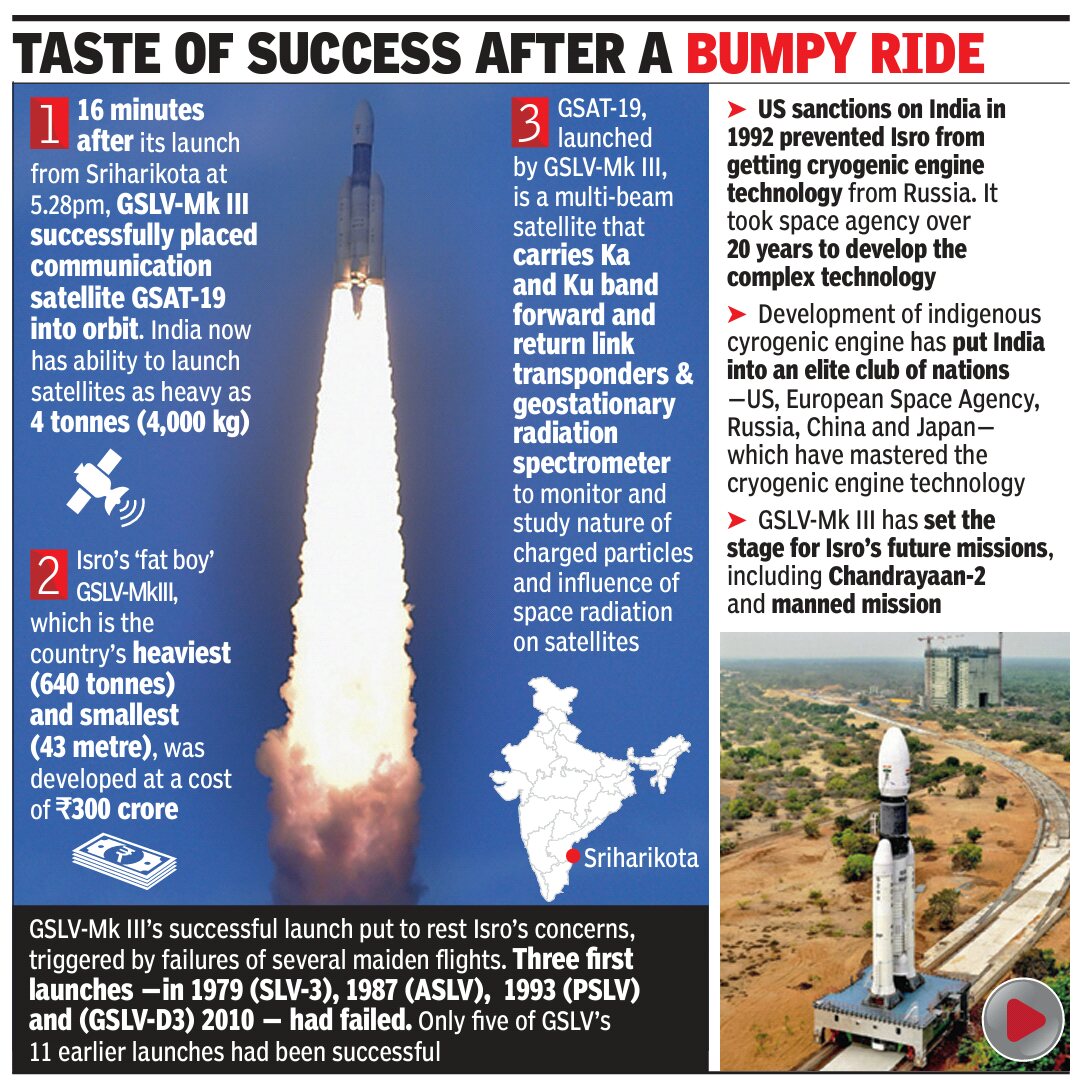This new achievement of the Indian Space Research Organization (ISRO) is not more or less than Chandrayaan and Mangalyaan. On Monday evening, ISRO launched the heavy Satellite Launch Vehicle GSLV Mark-III. It is India's largest rocket so far, which is about 640 tonnes in weight. In its first flight, this rocket will carry 4000 kilogram satellite into its orbit. GSLV Mark-3 will not only save the country's money in the launch of heavy domestic satellites but will also open the expensive market of launching four-ton class satellites of other countries.
The biggest thing of this rocket is that it is made entirely in India. In the launch of light satellites, ISRO has already been ruling the whole world, now after showing its ability to leave heavy satellites, it is not necessary for us to prove anything. Indeed, the quadruple development on the second day of telecommunications has suddenly raised the demand for satellites weighing more than 3500 kgs in the space market of the world. After launching the work of GSLV Mark-III, we will become self-reliant in the launch of communication satellites and will also be successful in wooing foreign customers. The height of this granite rocket is equal to a 13-story building and it can launch up to four tonnes of satellites in higher classes.
This rocket has a cryogenic engine prepared with indigenous technology, which uses fluid oxygen and hydrogen as fuel. It took India years to complete this project. Further, this rocket will carry the Indian astronauts to the space. The market of satellite launch is growing rapidly in the world and India is fast growing in this, but we need to speed up our pace. Currently, America's stake is 41 per cent in terms of earnings in this market, while India's share reaches barely four per cent. China makes at least 20 launches in a year. From this point of view, we still need to do a lot. However, ISRO has proved this with the accomplishments of the past few years that if we get the work environment and independence, our institutions can perform world-class performance in any case. But every success of ISRO also raises the question that why the rest of India's scientific institutions are not able to show this level. India is competing with America, Russia and China in satellites and space shutters, but from nuclear power to space - In case of upkeep of military equipment, we are dependent on foreign sources. This situation should be changed.
Image sources - The Times of India
 |
| GSLV Mark - III Timeline |
The biggest thing of this rocket is that it is made entirely in India. In the launch of light satellites, ISRO has already been ruling the whole world, now after showing its ability to leave heavy satellites, it is not necessary for us to prove anything. Indeed, the quadruple development on the second day of telecommunications has suddenly raised the demand for satellites weighing more than 3500 kgs in the space market of the world. After launching the work of GSLV Mark-III, we will become self-reliant in the launch of communication satellites and will also be successful in wooing foreign customers. The height of this granite rocket is equal to a 13-story building and it can launch up to four tonnes of satellites in higher classes.
 |
| Cryogenic Engine |
This rocket has a cryogenic engine prepared with indigenous technology, which uses fluid oxygen and hydrogen as fuel. It took India years to complete this project. Further, this rocket will carry the Indian astronauts to the space. The market of satellite launch is growing rapidly in the world and India is fast growing in this, but we need to speed up our pace. Currently, America's stake is 41 per cent in terms of earnings in this market, while India's share reaches barely four per cent. China makes at least 20 launches in a year. From this point of view, we still need to do a lot. However, ISRO has proved this with the accomplishments of the past few years that if we get the work environment and independence, our institutions can perform world-class performance in any case. But every success of ISRO also raises the question that why the rest of India's scientific institutions are not able to show this level. India is competing with America, Russia and China in satellites and space shutters, but from nuclear power to space - In case of upkeep of military equipment, we are dependent on foreign sources. This situation should be changed.
Image sources - The Times of India
Comments
Post a Comment